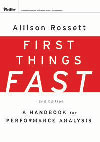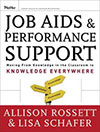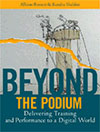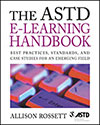 Many learning executives are concerned about visibility. They lament that they are not included early and sufficiently in the strategic work of the organization. Many seek appreciation and recognition for the learning enterprise, their learning enterprise.
Many learning executives are concerned about visibility. They lament that they are not included early and sufficiently in the strategic work of the organization. Many seek appreciation and recognition for the learning enterprise, their learning enterprise.
This long-standing concern has well-worn answers. I’ve offered some myself:
- align vigorously with the strategic purposes of the organization
- measure the learning enterprise against the metrics that matter most to the organization and leaders
- communicate with leadership through dashboards and stories riveted to high value metrics
- use data to continuously improve experiences and outcomes
- listen hungrily to the line and to customers
There is nothing to argue with there. But hold the applause. The problem lingers. While the advice is good, it isn’t sufficient.
Perhaps it would help if learning leaders marketed more aggressively? I don’t think that’s it.
Why don’t we instead think about it differently?
What if visibility is the wrong goal?
What if the goal should be more integration into the line, more seamless partnership with the other functions in the organization? What if it is less about us and a whole lot more about them?
Think of it as you would your body. When one part hurts, say your ankle or your tooth, you have a big problem. What you want is feet and choppers that help you ambulate and masticate without drawing attention to themselves. What you want is a purposeful, smooth and unobtrusive system. That’s what the C level wants.
Nobody likes a squeaky learning organization.
I chatted with Rob Lauber, Chief Learning Officer at McDonald’s. Only six months into his job, Rob is tasked, as many  new executives are, with reinventing his unit. What he is promising is to delight the line with training and related services that are more authentic and efficient– and far less bureaucratic. For him, it’s all about directing the attention of the learning enterprise towards the realities of the stores, not achieving more visibility for his unit. It comes of devotion to business outcomes.
new executives are, with reinventing his unit. What he is promising is to delight the line with training and related services that are more authentic and efficient– and far less bureaucratic. For him, it’s all about directing the attention of the learning enterprise towards the realities of the stores, not achieving more visibility for his unit. It comes of devotion to business outcomes.
Is Lauber opposed to instructional design methods? Not at all. In fact, he’s a fan. But he wants instructional design to inspire fresher, speedier decisions and services, not the burdensome requirements and hurdles often associated with ID.
The best learning units are quietly influential.
How might we be more influential?
- Establish relationships and trust. Let them see us sweat to enable their work. The perception of effort increases willingness to trust.
- Embed more learning and performance professionals in the line and bring savvy line people closer to the learning enterprise through temporary assignments, advisory councils, data capture, and online networks and mentoring.
- Question how well the unit is doing in light of emergent opportunities.
- Look to Robert Cialdini’s work on influence. (1) Give something if you want to get something. Don’t just ask or expect.Provide a positive experience or valuable briefing, then ask for participation. (2) Help people make decisions based on a social context. Others are doing it, don’t you also want to ___ ? Join us online to hear how colleagues are ____ (3) People like to be consistent, especially when they themselves have made a commitment. Link requests to ways that their efforts are congruent with prior commitments. (4) Explain how your organization has tapped familiar and well-liked colleagues as data sources. (5) Make sure that your programs have a sturdy foundation that comes from authoritative sources. (6) Make it clear that your programs are special, scarce. Intensity come with concern about missing out and lack of availability.
More visibility? A campaign to assure more attention? Not as a priority.
It is far better to be one of an effective team that is collaborating to get things done.
A few years ago, I worked on a project that investigated evaluation in a global consulting firm. I was surprised that few executives sought data about the effectiveness of their learning organization. Evaluation for program improvement, yes. Evaluation to prove worth, hardly at all. L&D collected data, just in case somebody requested it. But leadership did not actively look for it. How could that be? In this organization, what I heard was along these lines, “They know what we contribute. They see that what their people can do. They know how much our people rely on us.”
Sounds about right to me. No squeaky learning organization there. Less turned out to be quite a bit more. They were quietly influential.






Love all of your stuff, Allison. But I think I love this one the most:) Yes, our support services – services that support the work and success of others – should be a part of the natural order.
I have longed for the title “Invisible Assistant”. And for quite some time, changed my email signature to “Assistant to the Apprentice, the Journeyman, and the Master”
We do need to be more powerfully invisible rather than impotently visible.
I think this is SPOT ON! If we are in the right places, having the right kind of influence visibility is unnecessary! We will be affecting REAL change in our organizations. Great read!